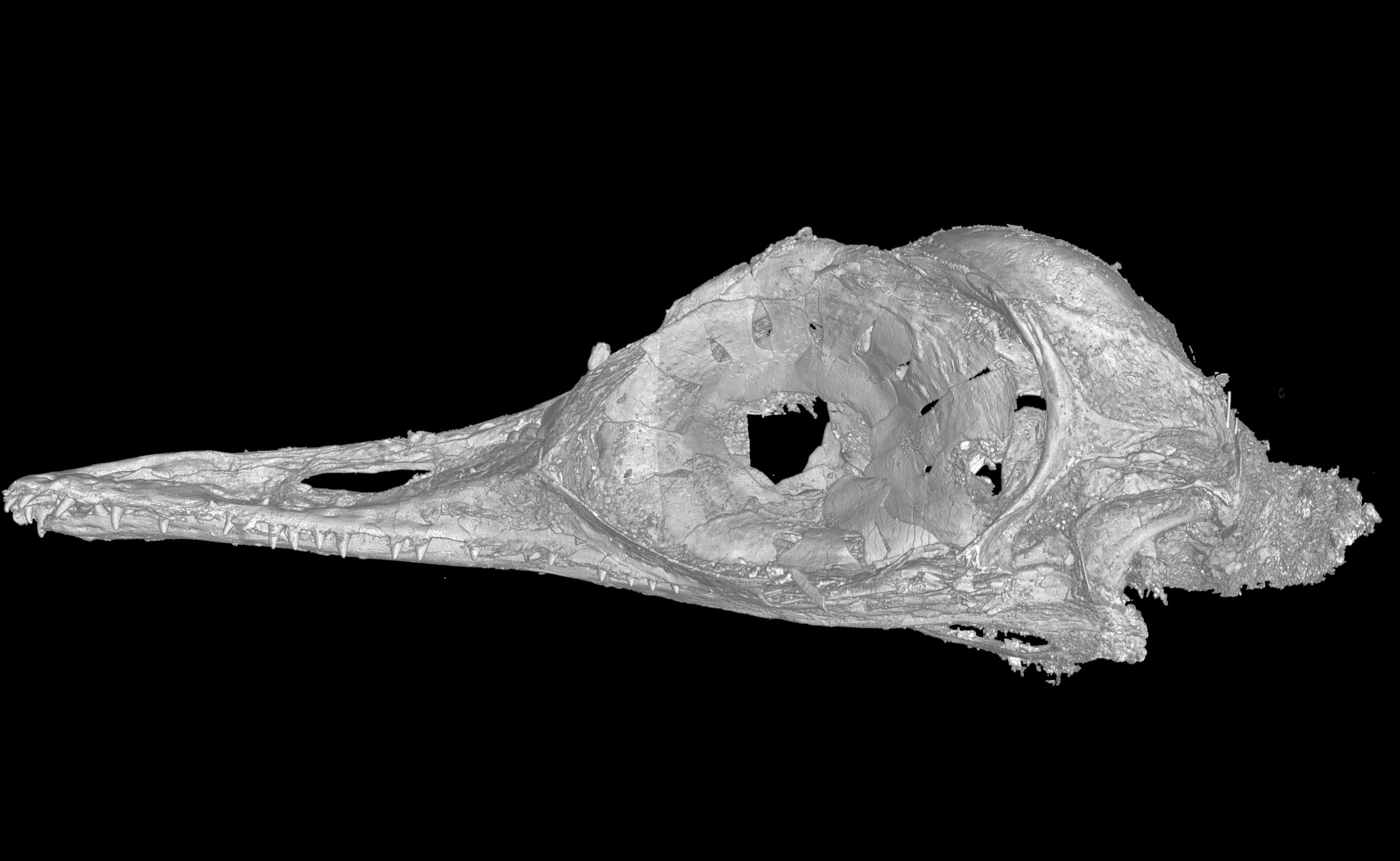The authors of a high-profile study published earlier this year, in which the scientists claimed to have discovered the world’s smallest dinosaur, have now retracted the paper in response to new fossil evidence.
The now-retracted Nature paper, published on March 11, 2020, apparently misidentified a tiny skull found inside a 99-million-year-old chunk of Burmese amber. Dating back to the Late Cretaceous period, the specimen was said to be the smallest dinosaur in the fossil record, in a claim that attracted considerable media and public attention.
With its bulbous eyes, 14-millimetre-long skull, and dozens of sharp teeth, it was “the weirdest fossil I’ve ever been lucky enough to study,” declared Jingmai O’Connor, the lead author of the paper and a researcher from the Institute of Vertebrate Paleontology and Paleoanthropology in Beijing, China, in a press release issued when the paper was first published. The fossil was identified as a tiny bird, weighing just 2 grams, and given the name Oculudentavis khaungraae.
This interpretation, however, appears to have been flawed. This fossil, designated HPG-15-3, is probably a lizard, and not an avian dinosaur. As Giuliana Viglione reports at Nature News, the paper was retracted owing to the emergence of a similar fossil, which a separate team of scientists have identified as belonging to a lizard.

“We, the authors, are retracting this Article to prevent inaccurate information from remaining in the literature,” wrote the authors in their official retraction statement. “Although the description of Oculudentavis khaungraae remains accurate, a new unpublished specimen casts doubts upon our hypothesis regarding the phylogenetic position [in the evolutionary tree] of HPG-15-3.”
In an email to Gizmodo, O’Connor said that while she agrees that the original assessment of the fossil as an avian dinosaur was incorrect, she doesn’t think a retraction was the best way to handle the problem, as it has created further problems.
“However, we were wrong and Oculudentavis is not a bird but a lizard, which time and new data will demonstrate,” she said. “Nature was not unfair or unkind to us; they made their decision for their own reasons, which were not disclosed to us but of course we must accept — and we do accept,” said O’Connor, adding that her team “worked every step of the way doing whatever Nature asked of us.”
Speaking to Retraction Watch, O’Connor said her team may have been wrong in their identification of the fossil, “but as we have demonstrated in a Matters Arising reply…the specimen cannot be unequivocally identified as either a bird or a squamate [lizard] without more material (which has come to light but is as yet unpublished and effectively does not exist to science yet).”
Nature’s Matters Arising policy allows outside scientists to submit any concerns they might have about a published Nature paper “as necessary to advancing scientific discourse.” These comments “can involve either challenges or clarifications of the published work and may, after peer review, be published online as Matters Arising, usually alongside a Reply from the original Nature authors,” but these comments “should ideally be based on knowledge contemporaneous with the original paper, rather than subsequent scientific developments,” according to Nature.
O’Connor brings up a good point: It seems odd that Nature would retract a paper based on a forthcoming study that has yet to go through peer review, but that appears to be the case.
O’Connor also said it’s not out of the ordinary for paleontologists to misidentify specimens and for new data to correct previous hypotheses, as she told Retraction Watch:
However, Nature chose not to publish our Matters Arising reply and instead retracts our paper — they must have their reasons. It’s unfortunate because this way science can’t simply correct itself (as it is supposed to do) and on top of that, according to the [International Code of Zoological Nomenclature] ICZN the nomenclatural acts are valid whether retracted or not creating a complex grey area. The paper is retracted, yet will continue to be cited. So science will correct itself and cite the paper even though it is retracted making the retraction pointless.
Which speaks to the new problems that O’Connor alluded to in her email to Gizmodo. It’s now an open question as to whether or not scientists will ignore the retraction or the new name, Oculudentavis khaungraae. As the authors pointed out in their retraction statement, they stand by their description of the fossil, even if their interpretation of its place within the evolutionary tree was flawed.
When asked to explain the retraction, a spokesperson from Nature said in an email that the journal is “unable to discuss the confidential process behind retractions as all correspondence with the author prior to publication remains confidential. The research paper was retracted by the authors and the retraction note reflects their rationale for the retraction.”
Addressing the retraction being influenced by the apparent introduction of a new scientific paper after the fact, the spokesperson said, “Nature retracts or agrees to a request for retraction when important contemporary errors or mistakes have been identified or acknowledged that undermine the conclusions of the research. Subsequent scientific developments are not, in and of themselves, a reason for retraction unless they invalidate the methodology used.”
Not very helpful responses. Nature is being tight-lipped about the situation, to the point where we can’t actually be sure why the paper was retracted and if Nature violated its own policies.
It’s important to point out that a preprint in June, written by a different group of scientists, also took exception to the O’Connor paper. In this preprint, which hasn’t gone through peer review, the authors said their own findings “highly contradict” the interpretation that the fossil belonged to a bird and that this “enigmatic animal demonstrates various morphologies” resembling lizards. In a subsequent retort, O’Connor and her colleagues said these authors “failed to provide conclusive evidence for the reidentification” of the fossil as lizard, but O’Connor now seems to have changed her opinion on the matter.
Paleontologist Andrea Cau from Parma, Italy, is also sceptical of the original classification, as Nature News reports:
[B]ecause so many of the specimen’s features are lizard-like — about ten, by his estimate — “the idea that it was instead a lizard could not be excluded”. Cau is not surprised by the retraction, and notes that reclassifications, especially of incomplete fossil specimens from unknown groups, are not uncommon in the field.
These concerns aside, and revisiting O’Connor’s comments to Retraction Watch, this particular retraction isn’t sitting very well with me. Nature seems to be violating its own Matters Arising policy, by considering data that wasn’t available to the researchers at the time of authorship.
To be clear, I’m not suggesting that criticism of the original paper is wrong, but this whole thing could’ve been handled considerably better.
